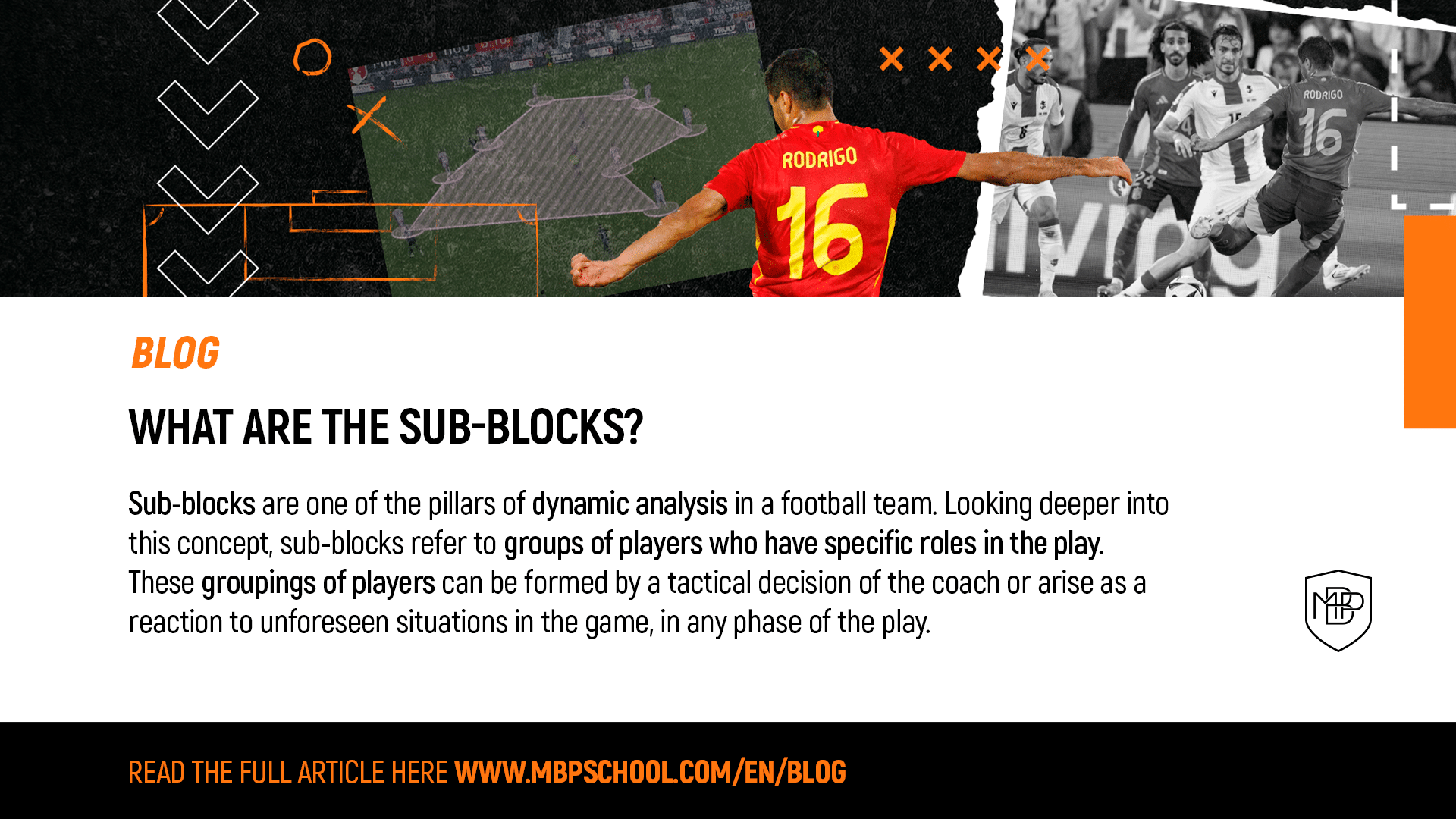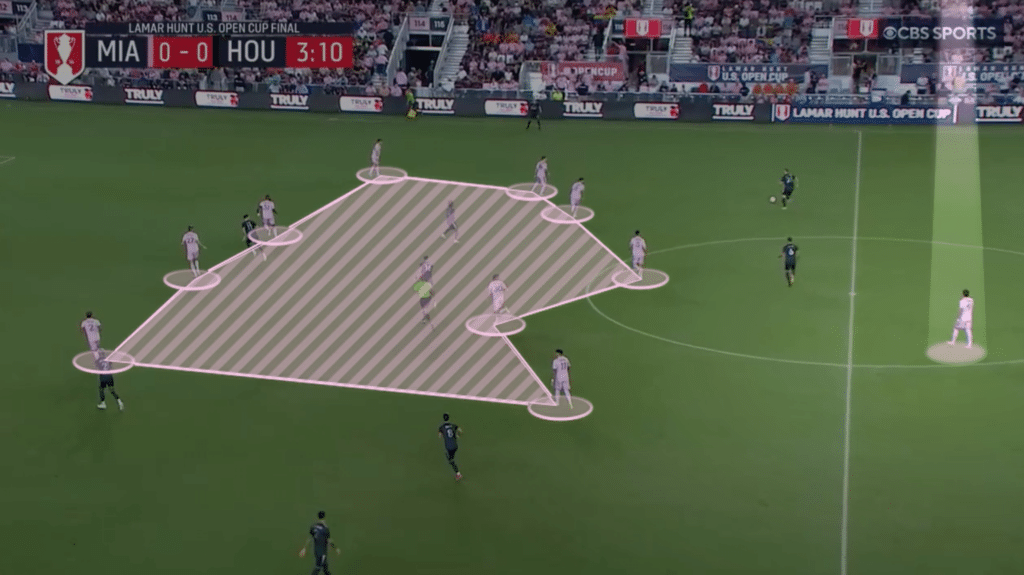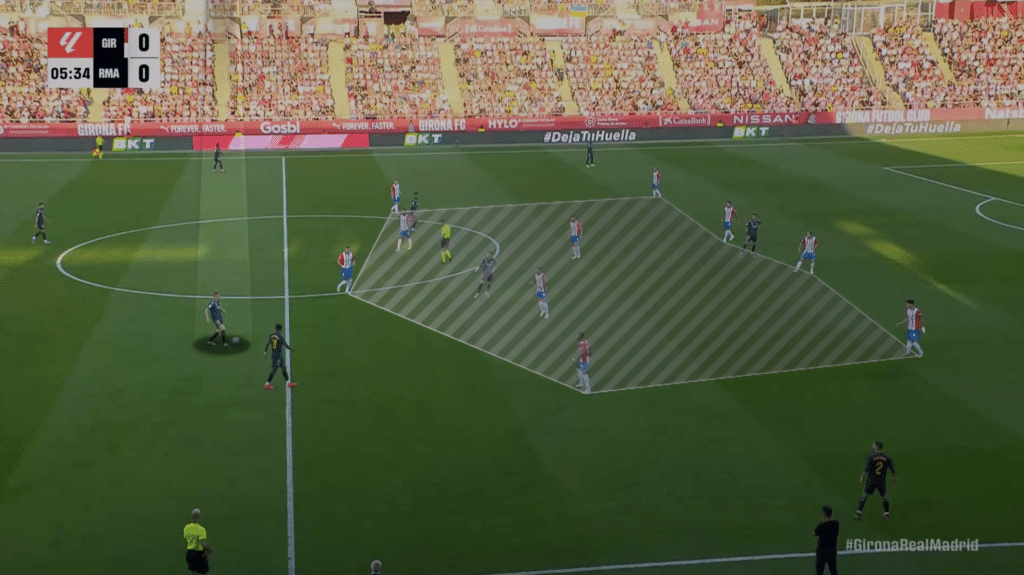Sub-blocks are one of the pillars of dynamic analysis in a football team. Looking deeper into this concept, sub-blocks refer to groups of players who have specific roles in the play.
These groupings of players can be formed by a tactical decision of the coach (deliberate) or arise as a reaction to unforeseen situations in the game (conditioned), in any phase of the play.
At the MBP School of Coaches, we divide the sub-blocks into two different types:
-
Functional Sub-Blocks
Functional sub-blocks refer to groups of players that the team deliberately generates with the intention of creating a specific situation. They are the result of a predefined strategy by the coach, designed to maximise efficiency in different phases of the game.
Furthermore, they are not only intended to position players in certain areas of the field, but also establish clear roles and responsibilities within the group.
This allows for better coordination and synchronisation in collective actions, whether it is to put pressure on the opponent, cover strategic spaces or launch quick counterattacks.
For example, if the team’s style of play revolves around taking advantage of attacking transitions and they have two very powerful and fast players, they may not participate in the defensive phase and instead wait for the moment when the team regains the ball to initiate a counterattack.
Picture 1: Source MBP
On the other hand, there are also teams that seek to stay in one compact unit, both in attack and defence. It is also rare to find teams that are functionally divided into more than two sub-groups of players.
Picture 2: Source MBP
-
Conditional Sub-Blocks
Conditional sub-blocks occur mainly due to two possible reasons: fatigue and match result.
Intense physical efforts can lead to imbalances in both attack and defence, especially in the final stages of matches. As players become fatigued, they are more likely to become disorganised, leaving open spaces that can be exploited by the opponent.
This can result in a decrease in defensive cohesion and a loss of precision in attacking transitions. In addition, low energy levels can lead to individual and collective mistakes, negatively affecting the overall performance of the team.
Furthermore, in close games, there may be a higher frequency of offensive and defensive transitions, resulting in greater exertion for both teams. These types of sub-blocks are not intentional but are a consequence of the circumstances of the match and affect the physical performance levels of the players.
In summary, understanding and analysing sub-blocks allows coaches and analysts to develop more focused strategies adapted to the dynamics of the game, thus improving the team’s performance in different situations and phases of the match.
This online course will allow you to delve deep into the MBP Scouting model and the functioning and use of professional Scouting. You will do it through challenges and game mechanics (gamification) and a story that will put you in the shoes of a junior scout recently arrived to a professional team. In short, you will have access to all the contents of the in-person program in a comfortable, attractive and motivating way: you will learn how to know the existing types of Scouting and identify both the player
analysis elements, individually, and the team, as well as all the keys to create a total report of the opponent.
In particular, you will know cutting-edge analysis technological tools and will learn how to use one of them to gather, order and interpret information according to methodological patterns and confront the competition in both your team and your rival’s analysis. All of it autonomously but also sharing what you learn with the community and the MBP teachers.
Ultimately, in this course you’ll know the basis of game analysis and gathering information from competitions to make coherent and effective decisions later.
Click here to get more information









